(Building Physics Laboratory, School of Architecture, Tsinghua University, Beijing 100084)
The Weiwu Camp Variety Center in Kaohsiung, Taiwan is the largest cultural facility in Asia. It includes a 2000-seat concert hall, a 2230-seat opera house, a 1,200-seat theater, a 500-seat auditorium and a 4,400-cubic-meter band rehearsal hall. The architects are Mecanoo Architects in the Netherlands and Archasia in Taiwan. In the concert hall of this building there is a large organ, which is mainly used for symphony performances, important solo and organ repertoire. However, based on actual Asian cultural life, this hall will be used for jazz, pop concerts and other activities that utilize sound reinforcement systems. Under this usage trend, the reverberation time (RT) IF will be adjustable from 1.6s to 2.2s. In addition to reverberation time, the design of this classic venue should create an intimate, warm and inviting atmosphere.
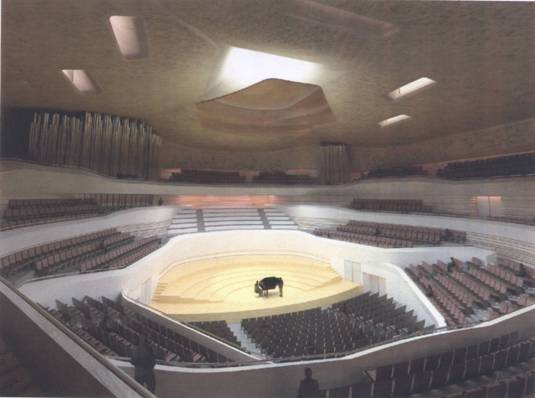
There are already several "shoebox" style concert halls in Taiwan. Although these forms are more secure for indoor sound quality, in the classic concert hall, the shoe box type is not the only form. This new hall in southern Taiwan is designed as a “vineyard†wrap-around hall. Compared to the famous shoe-box-like concert hall built in the 19th century, today’s concert hall is designed with the comfort of the audience in mind. Bigger). In the 19th century, the famous 2,000-seat shoebox concert hall would cause the problem of the farthest distance of the farthest audience (far more than 40 meters). Conversely, the farthest audience distance in this “vineyard†concert hall is 31m (relative to the command position), so the direct sound is stronger, especially on steeper floors.
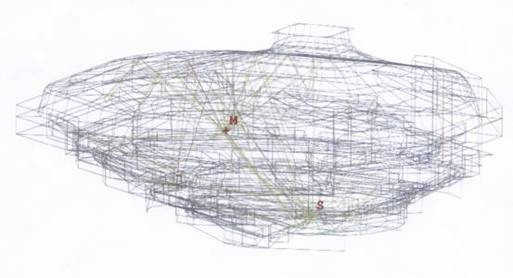
The musicians are surrounded by the audience in a short distance, and the intimacy surrounded by music is very different from the long "shoe box" style concert hall. There is no audience under the stage, and the hall gives people the feeling of music. The interior of the vineyard-style music hall does not have a side-reflecting wall inside the shoe-box-like hall. Therefore, this diffuse reflection is provided by reflective arc walls and fences that surround the platform of each group of spectators. The curved rear seat (1.2-1.3 m from the ground) is made of multi-layer board and can also have a large sense of space.
The volume of the hall is 24,770 cubic meters, each with a plot ratio of 11.9 cubic meters. When there are 80 musicians on the stage, the reverberation time is 2.1s (medium frequency 500HZ). Although due to the form of the vineyard and the "tent" type of ceiling, the audience of the concert hall absorbs more than the sound of the shoebox concert hall, so the inner surface is composed of thick reflective material, such as GRG board (volume weight 1600kg) /m3 and areal density 60-80kg/m2). Moreover, unlike some concert halls, the smooth inner surface is also treated to avoid acoustic staining caused by the comb filter. Most of the walls, ceilings, and ceiling surfaces in the hall are treated with different diffusion treatments (using MLS and other reliefs). The “volcano†type of ceiling provides the auditorium with a highly efficient and unobtrusive reflection.
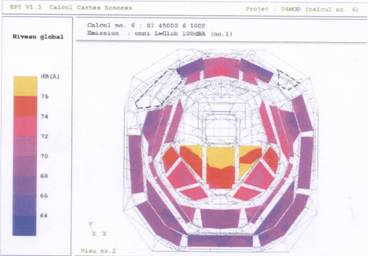
The movable reflector on the stage can adjust the height from the stage surface (17m, 14m, or 9m), and the ratio of the early reflection sound to the late reverb sound can be adjusted according to different music styles (like the zoom of the camera lens). A large number of computer and computer simulations have facilitated adjustments and improvements in the design phase.
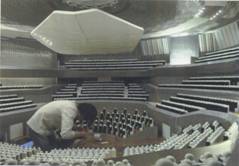
Although computer simulation is quite helpful in making decisions, it is still based on sound line tracking technology, ignoring the impact of three-dimensional space on sound diffusion. In the three-dimensional model used for simulation, many geometric changes are simplified or ignored. The grazing decay process of sound in the seating area is difficult to perform with computer simulation. Therefore, a 1:10 scale model test was performed under atmospheric sound absorption correction. (See the picture below) in line with the international ISO3382 standard.
Since the air absorption in the high frequency portion is very severe in the 1/10 scale model (for example, 2 kHz becomes 20 kHz), in order to reduce the additional air absorption, the atmosphere in the model should be processed by the following method (a The relative humidity inside the model filled with nitrogen (b) is reduced by 2% to 3%. (c) The air absorption is corrected by calculation.
Some new concert halls use the first method, but this method is not unique. In view of people's working conditions (health and comfort level) and operational efficiency (into the model to change the position of the microphone multiple times, etc.), the test of this model is carried out under the condition of long-term monitoring of relative humidity of 2%. The air absorption in the model is the same as the real music hall (internal air humidity is 50% and temperature is 20 degrees).

The model is 5m long, 4m wide and 3.5m high. The exterior is a large, airtight space to ensure a test environment, and is equipped with an advanced drying system that works 24 hours a day. The measured acoustic decay curve ("impulse response") has a dynamic range greater than 40 dB, all of which are not possible with actual computer software (eg "DIRAC").

In addition to acoustic testing, this model also uses optical detection methods. Use a laser emitter to check the "acoustic reflection" of each angle of inclination of the wall and ceiling. For example, a back wall tilt may produce a long delay echo, even though it has a diffused surface of the MLS, but its diffusion effect is limited in the low frequency portion. For safety reasons, the angle has dropped from 15 degrees to 10 degrees.
In order to obtain the most realistic sound absorption coefficient of the final decoration materials and actual conditions of the 2000 models of the audience and the musicians, the samples of the materials were tested in a 1:10 scale reverberation chamber. Although the effect of sound absorption is different at the lower frequency portion, the carefully selected test material is close to the sound absorption coefficient of the actual material in the actual 1/1 scale. Therefore, the reverberation time of the test and other parameter indicators in the concert hall model are more credible and beneficial to the decision.
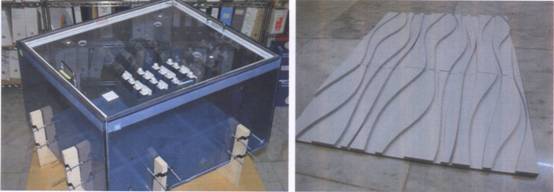
The reverberation time range for this hall is 0.6s for different frequencies, from 2.2s (concert) to 1.6s (jazz, intense music). In the latter case, 7 lighting openings will be opened on the ceiling, and a 500-square-meter velvet curtain will be hung in front of the organ on the second floor.
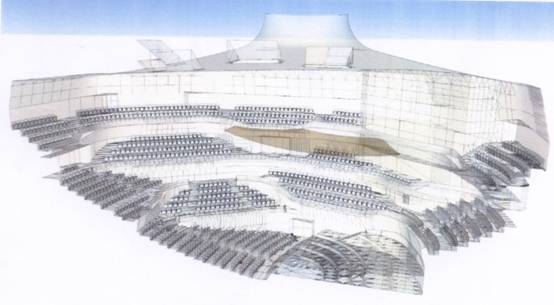
Many times, the grand pianist plays his repertoire on a giant stage. The delayed reflections and the empty stage affect the pianist's hearing and the sudden sound. Therefore, in addition to the suspended reflector, the model test provides another One solution: to help the pianist improve the listening feedback by lifting the stage, while allowing the audience to hear a natural and stable sound.
After a series of theoretical studies, it is still difficult to judge the sound quality of the concert hall in the future based on the computer simulation and the 1:10 scale model test results. During the construction phase, we still need to do a lot of in-depth work, including the necessary adjustments after the 2-3 concerts held in the actual concert hall. Although the sound effects of the concert hall are very complicated and mysterious, it is still a scientific proposition.
Wuxi Lerin New Energy Technology Co.,Ltd. , https://www.lerin-tech.com
